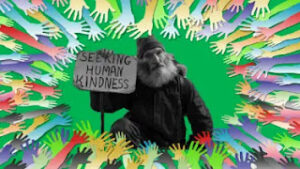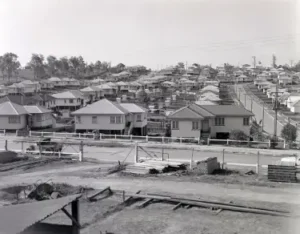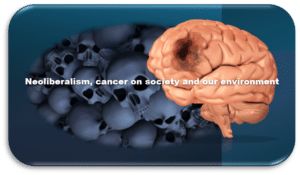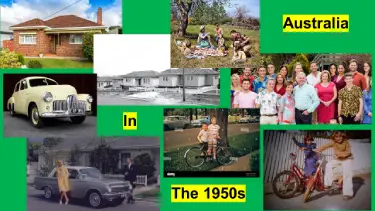Description: Growing Up After WWII

Explore why growing up after WWII was the best time to grow up, highlighting the economic boom, social advancements, and Australia’s potential for a compassionate political system.
Introduction
Growing up in the years following the Second World War was an experience many look back on with fondness. This era was marked by significant economic growth, social stability, and numerous opportunities, setting the stage for what many consider one of the best periods in history to build a better life.
However, contrasting these golden years with today’s challenges, it’s clear how much the landscape has changed, primarily due to neoliberal policies. This article delves into why the post-WWII era was so prosperous and how understanding this period can guide us towards a more compassionate and ethical political system using Australia’s monetary sovereignty.
The Post-War Economic Boom
1. Overview of the Economic Boom
– The period following WWII saw unprecedented economic growth globally, with many countries experiencing a boom in industrial production and technological advancements. The Australian economy was no exception, as it transitioned from wartime production to peacetime prosperity. Government policies played a pivotal role, with substantial public investments in infrastructure and industries, leading to increased employment and rising living standards.
2. Job Market and Employment Opportunities
– During the post-war era, job opportunities were plentiful, particularly in the public sector. Governments at all levels—federal, state, and local—were actively recruiting young people, providing stable and secure employment. Training programs were abundant, ensuring that school leavers could gain valuable skills in various trades and professions.
Social and Cultural Developments
Improved Living Standards
 1. Housing Developments and Suburban Expansion
1. Housing Developments and Suburban Expansion
– The post-war housing boom led to the rapid development of suburban areas, providing affordable homes for millions of families. These new communities offered better living conditions, with access to modern amenities and a higher quality of life compared to pre-war urban environments.
2. Rise in Consumer Goods and Services
– The era saw a surge in the availability of consumer goods, from household appliances to automobiles. This increase in consumer goods not only improved daily living standards but also stimulated economic growth through heightened consumer spending.
Education and Opportunities
1. Expansion of the Education System
– Education systems expanded significantly, with more schools and universities being built to accommodate the baby boom generation. Governments recognized the importance of education in driving economic progress and social mobility, leading to widespread access to quality education.
2. Scholarships and Government Support
– Scholarships and government grants made higher education accessible to many who otherwise could not afford it. This investment in education ensured a well-educated workforce, which was crucial for sustaining economic growth.
3. Increase in Vocational Training and Technical Education

– Vocational training and technical education flourished, providing practical skills needed for various industries. The Technical and Further Education (TAFE) system in Australia became a cornerstone of this effort, offering training that met the demands of the growing economy.
Health and Welfare
1. Advancements in Healthcare and Medical Technology
– The post-war period saw significant advancements in healthcare, with improvements in medical technology and public health initiatives. These advancements increased life expectancy and improved overall health outcomes for the population.
2. Introduction of Welfare Programs and Social Safety Nets
– Governments introduced welfare programs to support those in need, ensuring a safety net for the unemployed, elderly, and disabled. These programs contributed to social stability and reduced poverty levels.
Personal Stories and Anecdotes
Life in the 1950s and 1960s
1. Day-to-Day Experiences of Families
– Families during this period enjoyed a stable and predictable life. With secure jobs and rising incomes, many could afford homeownership, cars, and holidays. Community life was vibrant, with local events and social gatherings being central to daily life.
2. Childhood Activities and Pastimes
– Children had a variety of outdoor activities and pastimes. Sports, playgrounds, and community centres provided spaces for recreation and socialization, contributing to a wholesome childhood experience.
3. Community Life and Social Interactions
– Community life was strong, with neighbours knowing each other and taking part in communal activities. This sense of community fostered social cohesion and mutual support.
Interviews and Memories
1. Quotes from Individuals Who Grew Up During This Period
– “Growing up in the 1950s, I remember the optimism and the sense of opportunity. Jobs were secure, and there was a clear path to a stable future.” – John, 82.
2. Personal Reflections on the Era’s Opportunities and Challenges
– Personal stories highlight how the opportunities of the time shaped lives positively, providing a contrast to today’s more uncertain economic environment.
A Reflection on the Transformation of Employment Opportunities: My Journey
1. Personal Experience of Leaving School in 1957
– When I completed my schooling in 1957 at the age of 15, the idea of struggling to find a real, full-time, and secure job with fair wages was unimaginable. Back then, employment opportunities were abundant, especially in the public sector.
Federal, State, and Local governments were keen on hiring thousands of young school leavers annually, providing them with exceptional training in various trades and professions. Additionally, many of us had the chance to pursue university education through scholarships, and our TAFE system was renowned for its excellence.
2. Comparison with Today’s Job Market and the Impact of Neoliberal Policies
 – However, the employment landscape has drastically changed over the past four decades, due to the influence of neoliberal policies. Even individuals with university degrees face immense challenges in securing full-time, stable employment. This shift has led to a costly and inefficient system driven by corporate greed and favouritism towards businesses that support neoliberal politicians.
– However, the employment landscape has drastically changed over the past four decades, due to the influence of neoliberal policies. Even individuals with university degrees face immense challenges in securing full-time, stable employment. This shift has led to a costly and inefficient system driven by corporate greed and favouritism towards businesses that support neoliberal politicians.
3. Challenges Faced by Today’s Youth in Securing Full-Time, Stable Employment
– The impact on today’s youth is particularly disheartening. Many are left to contend with the harsh reality of part-time or casual jobs, devoid of adequate working conditions or job security. It’s a deplorable situation, to say the least, and a stark contrast to the opportunities that were available in my youth.
Comparative Analysis with Today
Opportunities Then and Now
1. Comparing Job Markets and Employment Security
– The job market of the post-war era offered greater security and stability compared to today. With the rise of casual and gig economy jobs, many workers now face uncertainty and lack the benefits once standard in full-time employment.
2. Differences in Education Systems and Accessibility
– While education is still critical, the costs have soared, and access to higher education has become more challenging for many. The scholarships and government support that once made education widely accessible have diminished.
3. Changes in Healthcare and Welfare Support
– Healthcare advancements continue, but access and affordability have become significant issues. Welfare programs are less robust, leaving many without the support they need.
Challenges Then and Now
1. Economic and Social Challenges Faced in the Post-War Era
– Despite the prosperity, the post-war period was not without its challenges. Economic recessions, inflation, and social tensions did arise, but the overall trend was towards growth and improvement.
2. Modern-Day Challenges and Uncertainties
– Today’s challenges include job insecurity, high living costs, and the erosion of social safety nets. These issues create a more precarious environment for many, contrasting sharply with the stability of the post-war era.
Lessons for the Future
Learning from the Past
1. What Contemporary Society Can Learn from the Post-War Era
– The policies and investments that drove post-war prosperity offer valuable lessons. Investing in education, infrastructure, and social programs can foster similar growth and stability today.
2. Policies and Practices That Could Be Revived or Adapted
– Reviving support for public education, expanding vocational training, and ensuring job security through government programs can help recreate some of the post-war era’s benefits.
Building a Better Future
1. How Understanding This Period Can Guide Current and Future Generations
– By understanding the successes and challenges of the post-war era, policymakers and society can make informed decisions to address contemporary issues effectively.
2. Encouraging Discussions on Improving Today’s Socio-Economic Conditions
– Encouraging open dialogue about economic policies, social programs, and the role of government can lead to better solutions for today’s challenges.
Conclusion
Summary of Key Points
1. Recap of Why the Post-War Era Was a Unique and Prosperous Time
– The post-war era was marked by economic growth, social stability, and numerous opportunities, making it a unique period of prosperity.
2. Reflection on Personal Stories and Societal Advancements
– Personal stories and societal advancements highlight the era’s positive impact, providing a stark contrast to today’s challenges.
Call to Action
1. Share Their Thoughts and Personal Stories
– Share your thoughts on how life after WWII compares to today. Do you think we can learn from the past to improve our future? Comment below!
2. How Past Lessons Can Inform Present and Future Policies
– Engage in discussions about how past lessons can guide current and future policies to create a more fair and prosperous society.
Social Sharing
By exploring why growing up after WWII was such a prosperous time and comparing it to today’s challenges, this article aims to offer valuable insights and encourage discussions on how we can learn from the past to build a better future.

